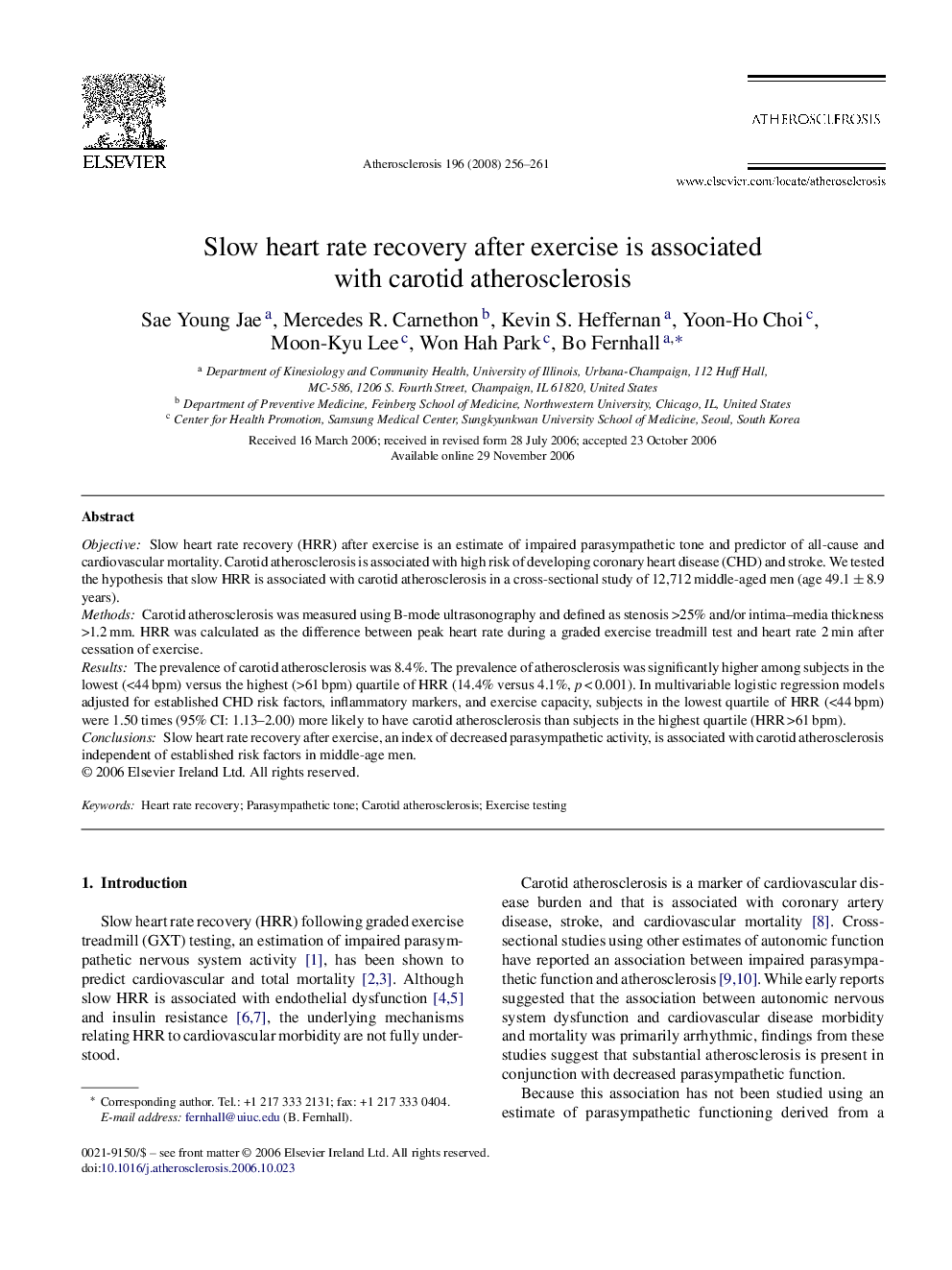| کد مقاله | کد نشریه | سال انتشار | مقاله انگلیسی | نسخه تمام متن |
|---|---|---|---|---|
| 2894518 | 1172436 | 2008 | 6 صفحه PDF | دانلود رایگان |

ObjectiveSlow heart rate recovery (HRR) after exercise is an estimate of impaired parasympathetic tone and predictor of all-cause and cardiovascular mortality. Carotid atherosclerosis is associated with high risk of developing coronary heart disease (CHD) and stroke. We tested the hypothesis that slow HRR is associated with carotid atherosclerosis in a cross-sectional study of 12,712 middle-aged men (age 49.1 ± 8.9 years).MethodsCarotid atherosclerosis was measured using B-mode ultrasonography and defined as stenosis >25% and/or intima–media thickness >1.2 mm. HRR was calculated as the difference between peak heart rate during a graded exercise treadmill test and heart rate 2 min after cessation of exercise.ResultsThe prevalence of carotid atherosclerosis was 8.4%. The prevalence of atherosclerosis was significantly higher among subjects in the lowest (<44 bpm) versus the highest (>61 bpm) quartile of HRR (14.4% versus 4.1%, p < 0.001). In multivariable logistic regression models adjusted for established CHD risk factors, inflammatory markers, and exercise capacity, subjects in the lowest quartile of HRR (<44 bpm) were 1.50 times (95% CI: 1.13–2.00) more likely to have carotid atherosclerosis than subjects in the highest quartile (HRR >61 bpm).ConclusionsSlow heart rate recovery after exercise, an index of decreased parasympathetic activity, is associated with carotid atherosclerosis independent of established risk factors in middle-age men.
Journal: Atherosclerosis - Volume 196, Issue 1, January 2008, Pages 256–261